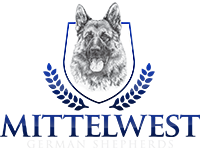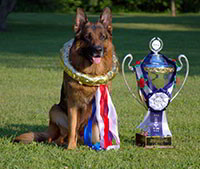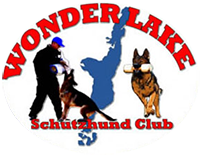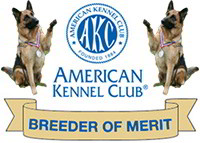TL;DR:
German Shepherds come in various types, each with distinct traits shaped by their origins and purposes. From the high-energy West German working lines to the family-friendly American pet lines, the differences help in choosing the right companion. Mittelwest German Shepherds specializes in breeding top-quality dogs, with a focus on health, temperament, and adherence to German standards.
At Mittelwest, we frequently meet passionate dog lovers who are curious about the diverse range of German Shepherd types. People are often surprised at how one breed has developed so diversely.
German Shepherds are celebrated for their intelligence, loyalty, and adaptability. Over time, different breeding goals shaped several distinct lines, each with unique physical traits, temperaments, and historical purposes.
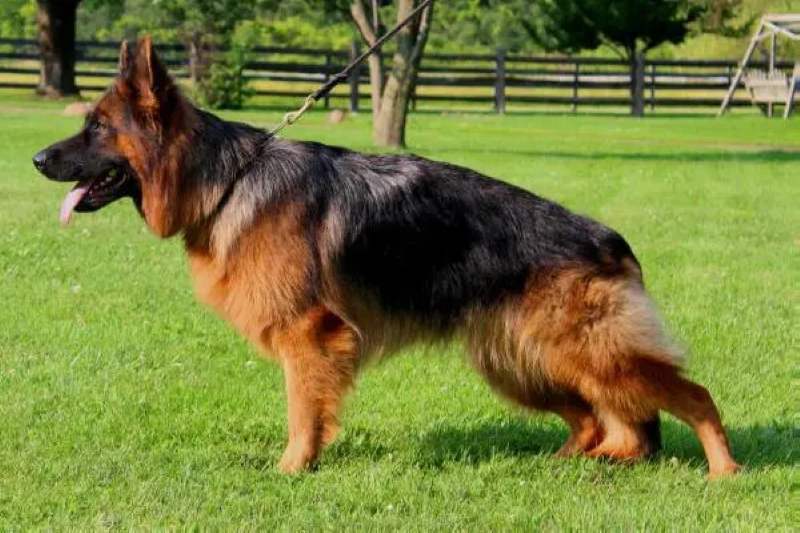
German Shepherd Breed Types
Over the years, German Shepherds have evolved into several recognized types based on regional breeding standards and intended roles. Each type offers a unique combination of character, capability, and visual distinction.
The historical backdrop and design of each German Shepherd type can help you choose the one best suited to your lifestyle. Next, we’ll examine these variations in detail.
West German Working Lines
West German working lines are closest to the original working concept envisioned by Captain Max von Stephanitz.
- Traits:
- Strong work drive and high energy levels.
- Medium to large build with straight backs.
- Typically black and tan coloration.
- Balanced temperament combining courage with stability.
- Ideal for: Police work, search and rescue, and competitive dog sports like Schutzhund protection work.
While intense, they aren’t uncontrollable. Their energy and drive are manageable with proper training. For those seeking a loyal protector or a focused work partner, this line offers both.
West German Show Lines
Breeders develop this variety with an eye for appearance, without sacrificing too much of the breed’s original purpose. These dogs offer an outstanding balance of beauty and performance.
- Purpose: Bred for the show ring while maintaining working ability.
- Characteristics:
- Striking red and black saddle pattern.
- More angulated hindquarters than working lines.
- Slightly larger bone structure and more substantial build.
- Strong breed temperament.
- Commonly seen in: European show rings, maintaining solid working capabilities despite a focus on conformation standards.
Although selectively bred for their appearance, their instincts remain intact. They’re still capable of protection and obedience work. Owners get a beautiful, functional dog that impresses in both style and substance.
East German (DDR) Lines
The East German or DDR line developed in post-war East Germany under strict breeding controls. Breeders shaped these dogs for military endurance, discipline, and physical resilience.
- Development: Bred in isolation during Germany’s division after World War II.
- Features:
- Darker pigmentation and coloration.
- Dense bone structure and substantial heads.
- Exceptional hardiness in harsh conditions.
- Superior scenting ability for border patrol work.
- Serious, focused temperament suitable for military and patrol applications.
- Current status: Pure DDR lines are becoming rare but remain valued for their powerful physical presence and unwavering focus.
Not just brawn, DDR dogs are mentally focused. Their serious temperament makes them ideal for experienced handlers. If you’re looking for intensity and structure, these dogs deliver both.
Czech Border Patrol Lines
Czech lines emerged in a similar timeframe to DDR dogs, but from a different breeding program. Breeders raised these dogs specifically for border patrol work with emphasis on working aptitude.
- Attributes:
- Strong prey and defense drives.
- Dark pigmentation with a wolf-like appearance.
- Exceptional tracking skills.
- High energy and strong work ethic.
- More reserved with strangers, reflecting their protective heritage.
- Modern use: Many working dogs combine Czech and West German working lines to create balanced protection dogs.
Their instincts are sharp, and their alertness is high. Though protective, they’re steady under trained leadership. For handlers seeking high-drive, ready-to-work companions, Czech lines are a compelling option.
American Show Lines
American show lines represent a more stylized version of the breed, shaped largely by AKC conformation standards. They differ noticeably from their European cousins in structure and temperament.
- Breeding focus: Primarily for AKC conformation showing.
- Distinctive traits:
- Distinctly sloped topline.
- More extreme angulation in hindquarters than European types.
- Larger size with rich black and tan coloration.
- Milder temperament, maintaining an elegant appearance.
- Considerations: While sometimes criticized for deviating from the original working standard, well-bred American show lines can still make excellent family companions.
Though temperamentally softer, they’re still loyal and capable. With proper care, they thrive in family homes. If elegance and temperament are priorities, American show lines offer just that.
American Pet Lines
American pet lines emphasize companionship and easygoing nature over strict conformation or working traits. These dogs are found in countless homes and come in various sizes and coat colors.
- Variability:
- Appearance and structure can vary, often larger or smaller than standard.
- Wide range of colors.
- Temperament: Family-oriented with less intense drive than working lines.
- Suitability: Their adaptable nature allows them to thrive in family settings where a working drive may be less desirable.
Not every dog needs to patrol borders or win shows. These dogs excel in homes that prioritize friendliness and affection. They’re loving companions without the high demand of working lines.
Choosing The Right German Shepherd Type
Choosing a German Shepherd isn’t just about looks—it’s about lifestyle fit. Different lines have different needs, and recognizing this helps set both dog and owner up for success.
When selecting a German Shepherd, consider:
- Lifestyle & Activity Level: Working lines require more physical and mental stimulation.
- Space Availability: Larger breeds need more room to move.
- Experience with Working Breeds: Some lines may be more suitable for experienced handlers.
- Training Goals & Commitment: Different lines require varying levels of training.
- Purpose for the Dog: Companion, protection, or sport.
Working with reputable GSD breeders who understand the different types of German Shepherds helps make an informed decision.
Mittelwest Is A Premier GSD Breeder
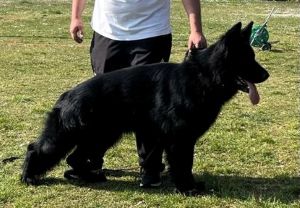 Mittelwest has been a leader in German Shepherd breeding for decades, renowned for its dedication to upholding the breed’s integrity. We adhere to German SV standards, with a focus on health, temperament, and function.
Mittelwest has been a leader in German Shepherd breeding for decades, renowned for its dedication to upholding the breed’s integrity. We adhere to German SV standards, with a focus on health, temperament, and function.
With an exceptional record, we were ranked the #1 U.S. kennel for German-bred shepherds for 13 straight years. We breed our dogs for companionship, show, and working capability.
We don’t just breed dogs—we foster partnerships between dogs and their owners. From health guarantees to training programs, our approach is comprehensive. Mittelwest blends tradition, excellence, and a deep love for the breed.
Breeding Philosophy
- Adherence to German SV Standards: Breeding world-class German Shepherd dogs from West German Sieger show lines.
- Temperament: Emphasis on attentiveness, assertiveness, self-confidence, courage, and trainability.
- Health Guarantees: Offering a lifetime warranty, aiming to develop the healthiest and longest-living German Shepherds.
Services
- Breeding & Importing: Breeding, importing, and shipping German Shepherd dogs worldwide.
- Puppies for Sale: Offering litters for family, companionship, or working purposes.
- Training: Providing training services to ensure well-mannered companions.
Whether you’re looking for a showstopper, protector, or family friend, Mittelwest knows and cares to deliver. Our pups are born to thrive, not just be admired.
German Shepherds are among the most adaptable dogs in the world, having been shaped over time by their purpose and passion. Knowing the differences in each type ensures you find the right fit.
Whether you’re looking for a calm companion or a focused working dog, one of these lines will suit your needs. At Mittelwest, our thoughtful research and ethical breeding make all the difference.

